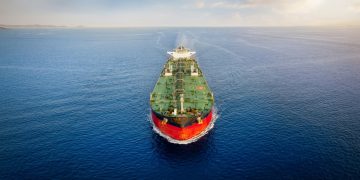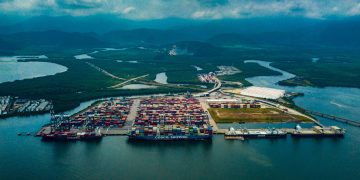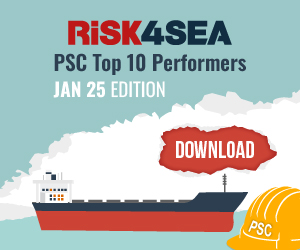According to DNV, key biofuels like FAME and HVO have great potential for reducing emissions, but their benefits could be constrained by limited supply in the future.
Drawing on in-depth interviews and written surveys of eight biofuel suppliers and 12 shipping companies, the “Biofuels in Shipping” paper identified more than 60 locations which have already been proven to have carried out biofuel bunkering operations since 2015. The report estimates that the ports of Rotterdam and Singapore accounted for about half of all biofuels supply to shipping in 2023.

In 2023, the maritime sector consumed just 0.7 million tonnes of oil equivalent (Mtoe) of liquid biofuels, representing a mere 0.6% of global liquid biofuel supply and 0.3% of shipping’s total energy use, highlighting the limited uptake of biofuels in shipping today compared to other sectors. Despite this, biofuel holds significant potential for reducing GHG emissions and achieving compliance with regulatory frameworks, such as CII, EU ETS, and FuelEU Maritime.
To realise these benefits, the biofuels used must meet stringent sustainability and GHG savings requirements, verified through a Proof of Sustainability (PoS) or similar document.
Biofuels present a promising decarbonization option for shipowners, and it’s encouraging to see steady growth in the number of bunkering ports offering biofuels in recent years. However, the long-term future of the maritime biofuel market hinges on the availability of sustainable biomass at an affordable level, as well as competition with other sectors.
… said Knut Ørbeck-Nilssen, CEO Maritime at DNV
Supply-side constraints
From the interviews, DNV identified four key supply-side constraints impacting the biofuels market in shipping. These constraints are related to logistics, competition with other end-use sectors, and the scarcity of eligible marine biofuels:
-
Scarcity of feedstocks: Feedstock availability is expected to become a critical limiting factor for advanced biofuel production, particularly for waste sources such as used cooking oil (UCO). To address this, some suppliers are exploring new feedstock types (e.g., alternative waste feedstocks) and optimizing existing production assets.
-
GHG saving and sustainability criteria: EU GHG regulations for shipping incorporate sustainability standards that encourage the use of advanced biomass sources. For instance, FuelEU Maritime mandates that biofuels must not be derived from food or feed crops; otherwise, they are classified as fossil fuels under unfavorable default values. The criteria that the IMO will apply when mid-term measures come into force in 2027 remain unclear. Suppliers have noted that stringent sustainability standards significantly impact the volume of eligible biofuels for shipping.
-
Logistics: The low volume of biofuels currently used in shipping limits the development of dedicated bio-blended fuel infrastructure. This issue may diminish as biofuel uptake grows. However, some ports face challenges with the handling of FAME, including securing tanks and barges willing to store it. HVO is more widely accepted. In mainland China, the absence of a clear regulatory framework for blending fuel oil and FAME increases distribution costs. Resolving this could boost marine biofuel uptake in the region. For bunkering higher FAME content fuels (e.g., B30, B50, B100), IMO Type 2 tankers are required, which poses a bottleneck, particularly for blends with over 25% biofuel. Discussions in the IMO could lead to easing this requirement.
-
Competition with other sectors: Biofuel suppliers view aviation as a more attractive market due to higher margins driven by stricter quality requirements and complex production methods. Aviation regulations, such as ReFuelEU Aviation, mandate a specific share of Sustainable Aviation Fuel (SAF), providing clearer targets compared to the fuel-agnostic GHG regulations for ships. Additionally, shipping’s use of alternative non-biogenic fuels with lower GHG footprints (e.g., LNG, e-fuels) may limit biofuel demand. Road transportation remains the largest biofuel market, with potential increased demand from hard-to-electrify segments like long-distance heavy-duty trucks, even as passenger car electrification grows.
Øyvind Sekkesæter, a Consultant in Maritime Environmental Technology at DNV and the Lead Author of “Biofuels in Shipping,” explained that the technical compatibility of key marine biofuels, such as FAME and HVO, differs from ship to ship. He emphasized the importance of assessing each case individually to ensure that the fuel’s specifications and quality align with its intended application, thereby reducing the risk of equipment damage and power loss onboard vessels.
Shipowners should, therefore, aim to explore energy efficiency measures and alternative fuels as part of their wider decarbonization strategies, while utilizing biofuels where they are available and affordable.
… Knut Ørbeck-Nilssen highlighted.
































































